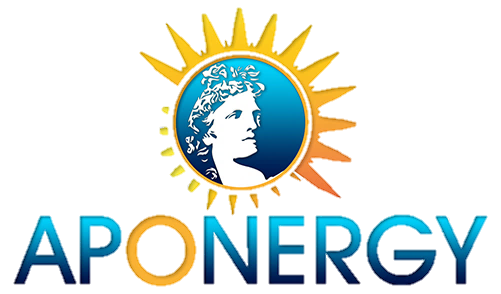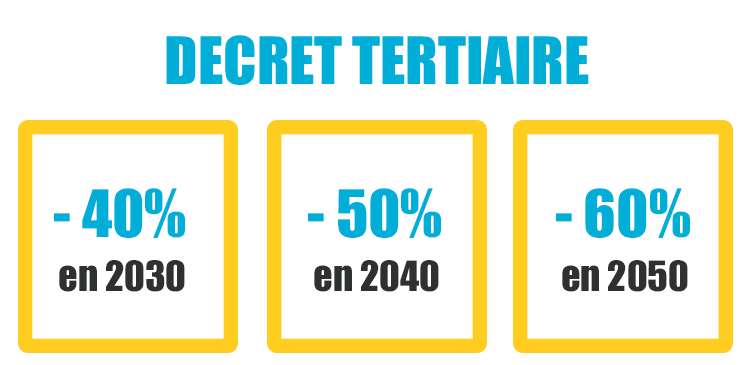Tertiary Sector
Shopping centers, logistics warehouses, health care facilities, hotels, office buildings, schools, communities...
Significantly reduce your energy consumption

- Electricity
- Gas
- Fuel
- Steam
- Hot lot
- Steam lot
- Cold lot
- HVAC lot
- Electricity lot
- Compressed Air lot
Our approach is global, which allows us to achieve significant energy savings.
- To respond effectively to the challenges of rising energy costs by allowing you to control your overall energy consumption
- To meet the regulatory constraints

The ELAN law, and in particular its article 175 concerning tertiary buildings of more than 1,000 m2 , institutes strong obligations for the owners or operators of the said buildings:
Obligation to establish and declare a reference situation, and the energy consumption for 2020 and 2021, on the OPERAT platform developed and made available by ADEME, before September 30, 2022
Obligation to establish a definition and planning of works and action plans allowing to achieve, compared to the reference situation, the following energy savings:
- – 40 % of final energy by 2030
- – 50 % of final energy by 2040
- – 60 % of final energy by 2050
Non-compliance with the obligations is subject to penalties:
- Publication on the Internet of the formal notices sent by the state services to the owners or operators of the buildings concerned, and which have remained without effect on the “name and shame” principle
- Payment of fines of up to €7,500 per site concerned
As an authorized agent, Aponergy will assist you in meeting your obligations under the “tertiary sector decree”:
- Establishment and declaration of your reference situation
- Deposit of consumption and reference data on the OPERAT platform
- Definition of an action plan allowing you to reach your legal objectives
Our method:
Realization of an energy audit
1
Costing of a solution within the framework of a simplified preliminary project and restitution of this one
2
Financial proposal in EPC (energy performance contract) or service contract
Realization of the works
3
Monitoring and guarantee of energy performance
4
Permanent technical and regulatory monitoring throughout the duration of the contract
The Energy Performance Contract
The contractual obligation of results
- A real guarantee of results throughout the duration of the contract
- Possibility of financing the investments to be made by the EPC provider
- Increase in energy saving certificates
Guarantee of results
The EPC is the only contract that commits the service provider to the promised level of performance. This guarantee translates annually into the payment of a bonus/malus due according to the actual performance recorded by an independent auditing office. The service provider accepts to guarantee the performance initially promised and commits to pay at least 66% of the difference between the promised energy cost and the actual consumption if the objective is not reached. The monitoring is done every year for the duration of the contract.
Third party financing
The EPC was initially designed to allow communities to carry out the energy saving work necessary to meet their political commitments to reduce greenhouse gas emissions, even though they do not have the financial means to do so independently. Thanks to this contract, EPC providers can therefore finance the work and investments to be carried out instead of the users. The EPC can be used in both public and private law, and most of the EPCs implemented to date are in the private sector: tertiary, industry, and collective housing.
In addition, and considering the initial spirit of the contract, the EPC being a service contract, the financing provided is deconsolidated in the accounts
Increase of the valuation of White certificates
The EPC, whether it is used with financing or only as a performance guarantee service, is not only compatible with the White certificate, but it even increases the latter.
The EPC, whether it is used with financing or only as a performance guarantee service, is not only compatible with the White certificate, but it even increases the latter.
Subject therefore to compliance with the rules in force, the deposit in KWh CUMAC specific to each operation (standardized or specific) of energy saving carried out within the framework of an EPC is increased by the equivalent of the guaranteed performance.
Aponergy advantage
In order to fully benefit from all the advantages of an EPC, we believe it is essential to use independent operators to be able to include in an EPC: all the work that generates energy savings: work involving savings in different forms of energy (electricity, gas, fuel oil, etc.), work that includes different consumption batches (industrial or commercial refrigeration, heating, ventilation, steam, lighting, electricity, processes, etc.), and thus maximize the savings to be achieved and guaranteed.
The EPC allows for the financing, operation, and performance guarantee of the solutions installed, while allowing for energy saving subsidies such as White certificate.
- Production of photovoltaic electricity for self-consumption (with the possibility of resale of the surplus)
- Roof, parking lot or other surfaces can be advantageously used to deploy a photovoltaic power plant whose production will be entirely or partly self-consumed on the site, which will secure the cost of the corresponding electricity consumption over the long term and protect you from price fluctuations on the electricity market.
- LED lighting
- Fatal heat recovery
- Replacement of cold production by energy-saving and low greenhouse gas generating technologies (ammonia cold production, transcritical CO2, glycol water distribution…)
- Renovation of the compressed air station, elimination of leaks…
- Revamping of steam production (renovation or replacement of steam boilers by high temperature heat pumps…)
Our certifications








They trust us













































